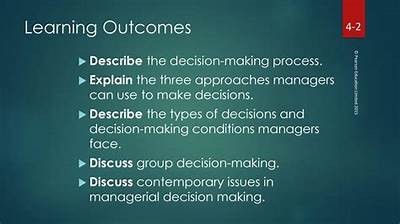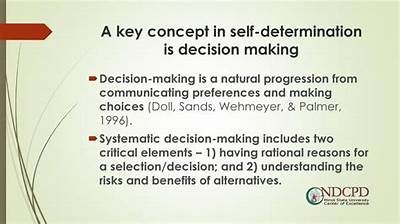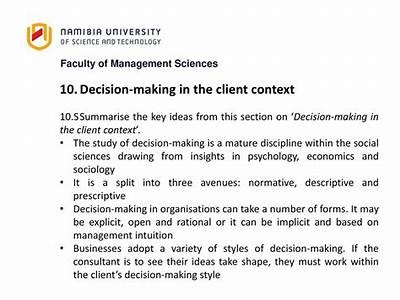In the realm of decision-making, understanding the concept of 'stake' is crucial for leaders, managers, and individuals alike. Whether in a corporate setting, public policy, or daily personal decisions, the stakes involved can significantly influence the outcomes of our choices. This article delves into the principles of stake in decision-making, explores the various types of stakes, and examines their impact on both individual and collective outcomes.

At its core, a stake refers to the interest or concern individuals or groups have in a particular outcome. It can manifest as financial investment, emotional attachment, social responsibility, or ethical obligations. Understanding what is at stake helps decision-makers gauge the potential consequences of their choices and the level of engagement from stakeholders.

Financial stakes are often the most tangible and quantifiable. In business decisions, investors and shareholders have a direct financial interest in the outcomes. Understanding the financial implications can guide management in making informed choices that align with stakeholder interests.

Emotional stakes are less tangible but equally impactful. Decisions affecting people's lives, such as those in healthcare or education, carry emotional weight. Leaders must consider the emotional responses of stakeholders to create strategies that resonate positively with them.

Social stakes encompass the broader implications of decisions on communities, networks, and societies. Public policies or corporate social responsibility initiatives reflect social stakes, as they often involve collective interests and ethical considerations.

Ethical stakes address the moral obligations that decision-makers have towards stakeholders. They compel leaders to consider fairness, justice, and the welfare of affected parties. Failing to recognize ethical stakes can lead to negative repercussions, including loss of trust and reputational damage. The Stakeholders
Stakeholders can be primary or secondary, each with varying levels of influence and interest in the decision-making process. Primary stakeholders are directly impacted by decisions, while secondary stakeholders might be indirectly affected or have a peripheral interest. Identifying and prioritizing stakeholders is a crucial step in effective decision-making. Decision-Making Models Rational Decision-Making Model
The rational decision-making model emphasizes logic and structured approaches to choices, allowing decision-makers to analyze stakes systematically. This model advocates for weighing potential outcomes, gathering relevant information, and assessing quantifiable risks associated with stakeholders. Bounded Rationality Model
The bounded rationality model recognizes that, despite efforts for thorough decision-making, individuals often operate within limitations of information and cognitive capacity. This reality leads to satisficing, where solutions are deemed acceptable rather than optimal. Understanding the stakes can help streamline choices within these constraints. The Impact of Stake on Outcomes
The stakes in a decision profoundly influence the resultant outcome. Higher stakes usually correlate with increased scrutiny and involvement from stakeholders, leading to more thorough analysis and better-informed decisions. Conversely, low-stakes scenarios may result in hasty or uninformed choices due to a lack of perceived significance. Case Studies Case Study 1: Corporate Decision-Making
In a corporate setting, a tech company faced a critical decision regarding a product launch. The stakes included substantial financial investment, market competitiveness, and brand reputation. By engaging stakeholders, including employees, investors, and customers, the company successfully aligned its strategy with collective interests, leading to a successful product release. Case Study 2: Public Policy
A city government faced a dilemma about constructing a new highway. The stakes included environmental impact, community displacement, and economic benefits. By incorporating public feedback and addressing stakeholder concerns, policymakers crafted a more balanced solution that mitigated negative effects while promising economic growth. Strategies for Effective Stake Management
Effective management of stakes involves several strategies: Stakeholder Analysis
Conducting a comprehensive stakeholder analysis helps identify key players, their interests, and the potential impact of the decision on them. This analysis informs communication strategies and engagement processes. Open Communication
Fostering transparent communication with stakeholders minimizes misinformation and builds trust. Open lines of dialogue encourage honest feedback and collaborative decision-making. Flexibility and Adaptability
Decision-makers should remain flexible to stakeholder feedback, adapting strategies as necessary to accommodate valid concerns and increase buy-in. Challenges in Stake Management
Despite the importance of understanding stakes in decision-making, challenges persist. Conflicting interests among stakeholders can complicate efforts to reach consensus. Additionally, insufficient engagement or failure to recognize certain stakes can lead to backlash or disengagement from affected parties. Conclusion
The concept of stake in decision-making cannot be overlooked. Acknowledging and addressing the interests of all stakeholders is vital for achieving positive outcomes. Decision-makers who prioritize stake considerations foster collaboration, enhance trust, and ultimately lead more effective and sustainable choices. Tags